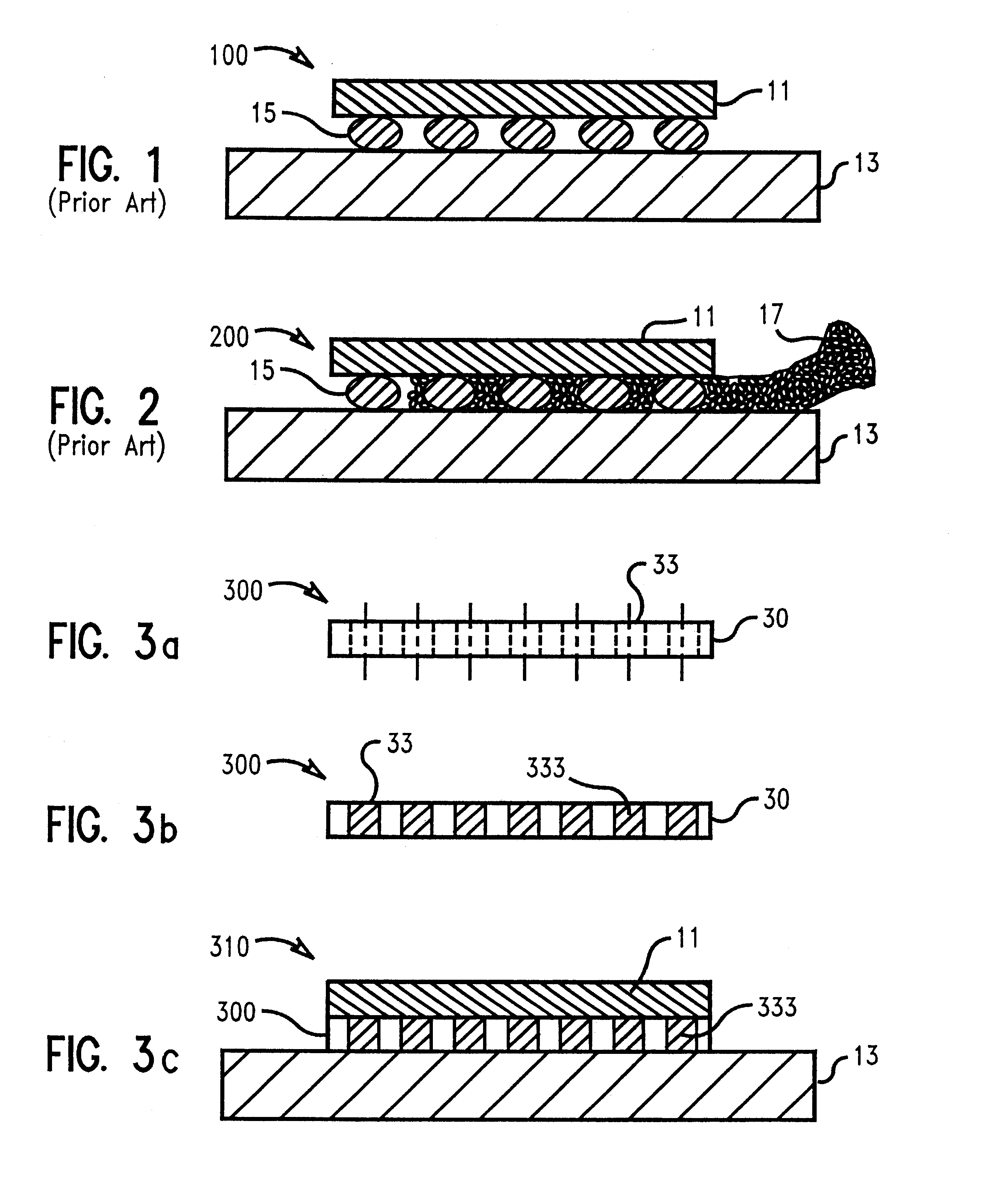Underfill preform interposer for joining chip to substrate
a preform interposer and chip technology, applied in the direction of printed circuit, sustainable manufacturing/processing, final product manufacturing, etc., can solve the problems of fatigue of solder joints, temperature excursions of the entire module, expansion and contraction of all of these components,
- Summary
- Abstract
- Description
- Claims
- Application Information
AI Technical Summary
Benefits of technology
Problems solved by technology
Method used
Image
Examples
Embodiment Construction
)
In describing the preferred embodiment of the present invention, reference will be made herein to FIGS. 1-6 of the drawings in which like numerals refer to like features of the invention. Features of the invention are not necessarily shown to scale in the drawings.
The present invention involves the use of a thin film interposer to make connections between a chip and a substrate for flip chip applications as depicted in FIGS. 3a-3c. The interposer 300 consists of a preformed laminate sheet 30, which is fabricated with multiple apertures or through-holes 33 as depicted in FIG. 3a. The laminate sheet 30 may comprise of an organic polymer such as polyimide, Kapton.RTM., Mylar.RTM., or any other material that will be stable at temperatures which are required to either join the interposer to the chip and the substrate, or to power the chip / substrate combination during normal operation.
The apertures 33 traverse the entire thickness of the laminate sheet 30. The apertures 33 may be formed ...
PUM
 Login to View More
Login to View More Abstract
Description
Claims
Application Information
 Login to View More
Login to View More - R&D
- Intellectual Property
- Life Sciences
- Materials
- Tech Scout
- Unparalleled Data Quality
- Higher Quality Content
- 60% Fewer Hallucinations
Browse by: Latest US Patents, China's latest patents, Technical Efficacy Thesaurus, Application Domain, Technology Topic, Popular Technical Reports.
© 2025 PatSnap. All rights reserved.Legal|Privacy policy|Modern Slavery Act Transparency Statement|Sitemap|About US| Contact US: help@patsnap.com



